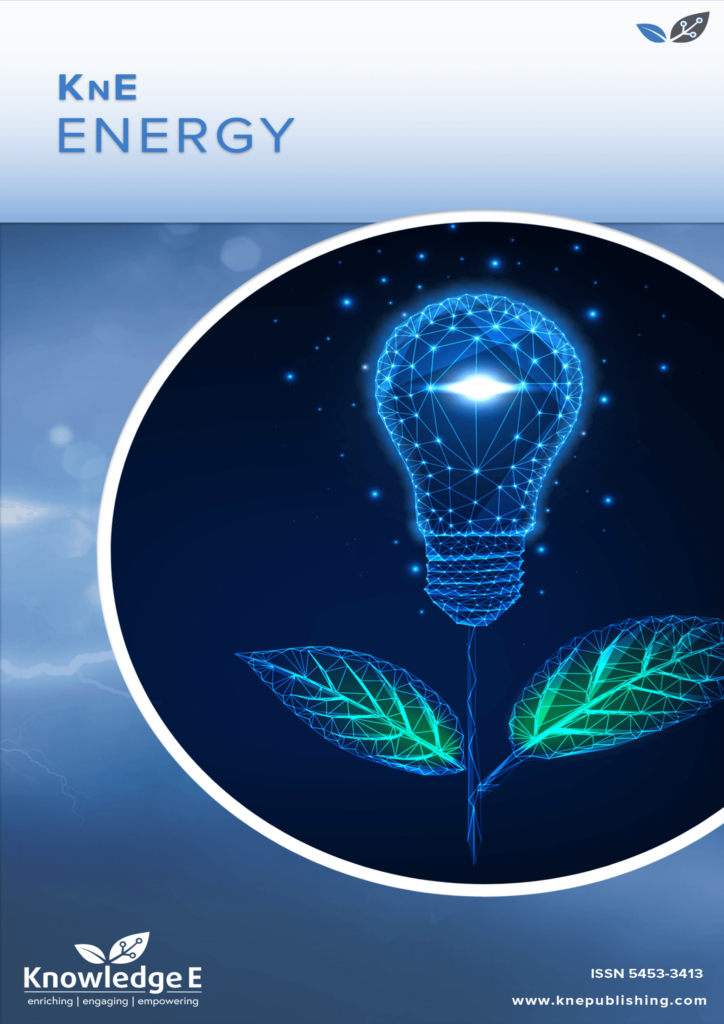
KnE Energy
ISSN: 2413-5453
The latest conference proceedings on energy science, applications and resources
Modeling and Optimization of the Porous Silicon Photonic Structures
Published date:Apr 17 2018
Journal Title: KnE Energy
Issue title: The 2nd International Symposium "Physics, Engineering and Technologies for Biomedicine"
Pages:75–81
Authors:
Abstract:
Photonic crystals and optical devices based on them are of great interest nowadays and are widely used in photonics, optoelectronics, and biosensing. One of the most practically using materials to fabricate one-dimensional photonic crystal is porous silicon due to the simple fabrication process, high porosity and ability to select precisely the refractive index by controlling the porosity. It has already been shown as the suitable material to be used as an element of many photonic devices including gas sensors and biosensors. However, because of the complicated porous structure, and silicon oxidation, occurring at the atmosphere conditions, optical properties of porous silicon photonic structures need to be stabilized by preventive oxidation. In order to predict eventual optical properties of fabricated photonic structures an adequate modeling should be performed. In our study we have developed a calculation model based on the combination of effective media approximations and transfer matrix method, which could precisely predict the reflection, transmission of the porous silicon photonic structures taking into account the dispersion of the refractive index of silicon and silicon oxide, and the oxidation degree. We also used numerical finite-difference time-domain calculations in order to investigate the luminescent properties of the lumiphores embedded into the porous photonic structure.
Keywords: Porous silicon, microcavity, transfer matrix, effective media, FDTD
References:
[1] G. E. Kotkovskiy, Y. A. Kuzishchin, I. L. Martynov, A. A. Chistyakov, and I. Nabiev, “The photophysics of porous silicon: technological and biomedical implications,” Physical Chemistry Chemical Physics, vol. 14, no. 40. p. 13890, 2012.
[2] F. A. Harraz, “Porous silicon chemical sensors and biosensors: A review,” Sensors Actuators, B Chem., vol. 202, pp. 897–912, 2014.
[3] M. D. La Mora, M. Ocampo, R. Doti, J. Lugo, and J. Faubert, “Porous Silicon Biosensors,” State Art Biosens. - Gen. Asp., pp. 141–161, 2013.
[4] R. A. Rakhimov, E. V Osipov, D. S. Dovzhenko, I. L. Martynov, and A. A. Chistyakov, “Influence of electro-chemical etching parameters on the reflectance spectra of porous silicon rugate filters,” J. Phys. Conf. Ser., vol. 737, p. 12026, 2016.
[5] O. Bisi, S. Ossicini, and L. Pavesi, “Porous silicon: A quantum sponge structure for silicon based optoelectronics,” Surf. Sci. Rep., vol. 38, no. 1, pp. 1–126, 2000.
[6] P. J. Reece, G. Lerondel, J. Mulders, W. H. Zheng, and M. Gal, “Fabrication and tuning of high quality porous silicon microcavities,” Phys. status solidi, vol. 197, no. 2, pp. 321–325, May 2003.
[7] P. a. Snow, E. K. Squire, P. S. J. Russell, and L. T. Canham, “Vapor sensing using the optical properties of porous silicon Bragg mirrors,” J. Appl. Phys., vol. 86, no. 4, p. 1781, 1999.
[8] G. A. Niklasson and C. G. Granqvist, “Effective medium models for the optical properties of inhomogeneous materials,” 1981.
[9] M. Khardani, M. Bouaïcha, and B. Bessaïs, “Bruggeman effective medium approach for modelling optical properties of porous silicon: comparison with experiment,” Phys. Status Solidi, vol. 4, no. 6, pp. 1986–1990, 2007.
[10] Z.-Y. Li and L.-L. Lin, “Photonic band structures solved by a plane-wave-based transfer-matrix method,” Phys. Rev. E, vol. 67, no. 4, p. 46607, 2003.
[11] D. S. Dovzhenko, I. L. Martynov, P. S. Samokhvalov, K. E. Mochalov, A. A. Chistyakov, and I. Nabiev, “Modulation of quantum dot photoluminescence in porous silicon photonic crystals as a function of the depth of their penetration,” Proc. SPIE, vol. 9885, no. Photonic Crystal Materials and Devices XII, p. 988507, 2016.
[12] T. C. Do, H. Bui, T. Van Nguyen, T. A. Nguyen, T. H. Nguyen, and V. H. Pham, “A microcavity based on a porous silicon multilayer,” Adv. Nat. Sci. Nanosci. Nanotechnol., vol. 2, p. 35001, 2011.
[13] U. Resch-Genger, M. Grabolle, S. Cavaliere-Jaricot, R. Nitschke, and T. Nann, “Quantum dots versus organic dyes as fluorescent labels.,” Nat. Methods, vol. 5, no. 9, pp. 763–775, 2008.
[14] P. Samokhvalov, P. Linkov, J. Michel, M. Molinari, and I. Nabiev, “Photoluminescence quantum yield of CdSe-ZnS/CdS/ZnS core-multishell quantum dots approaches 100% due to enhancement of charge carrier confinement,” SPIE Conf. Proc., vol. 8955, p. 89550S, 2014.
[15] I. H. Malitson, “Interspecimen Comparison of the Refractive Index of Fused Silica,” J. Opt. Soc. Am., vol. 55, no. 10, p. 1205, 1965.
[16] D. E. Aspnes and A. A. Studna, “Dielectric functions and optical parameters of Si, Ge, GaP, GaAs, GaSb, InP, InAs, and InSb from 1.5 to 6.0 eV,” Phys. Rev. B, vol. 27, no. 2, pp. 985–1009, Jan. 1983.